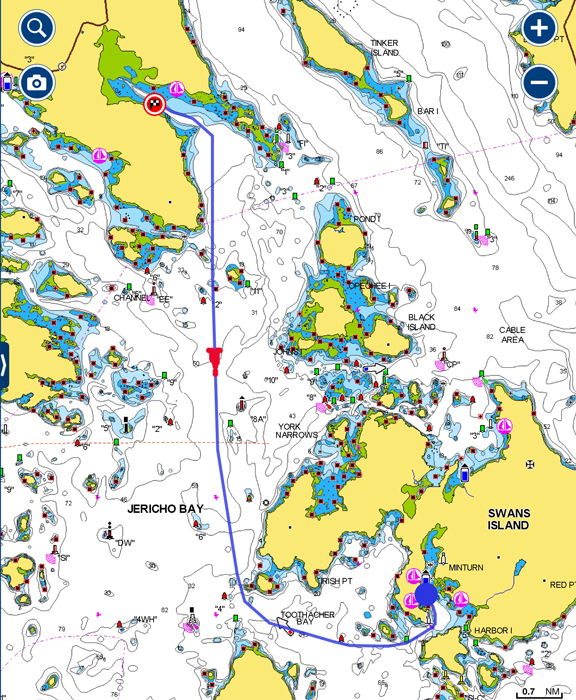Our Summer Cruise 2018
June 10 - 16 |
June 17 - 23 |
June 24 - 30 |
July 1 - 7 |
July 8 - 14 |
July 15 - 21 |
July 22 - 28 |
Jul 29 - Aug 4 |
Aug 5 - 11 |
Aug 12 - 18 |
Aug 19 - 25 |
Aug 26 - Sep 1 |
Sep 2 - 8 |
Sep 9 - 15 |
Sep 16 - 22 |
Sunday, August 19
Herrick Bay to Swan's Island - 18nm
After saying goodbye to Dean, we ventured out for our first run since our accident, slightly nervous but confident in our route. Great day to be on the water with light winds and sun! As we headed south, we took the opportunity to try out our re-located compass and it was holding our heading very closely. Setting the autopilot on "NAV", it was hands off the wheel while the boat took care of itself holding us within a few yards of our intended route all the way to the turn for Burnt Coat Harbor on Swan's Island. The radar was also spot on with the chart plotter with buoys on radar showing exactly where they were on the chart - way better than we had in the past. I don't want to jeopardize this success so will be keeping fingers crossed for a while longer.
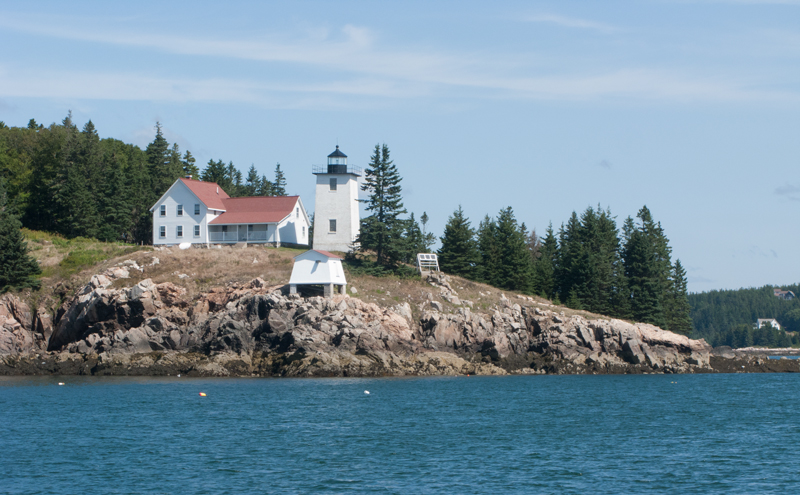
Burnt Coat Harbor Light (1872)
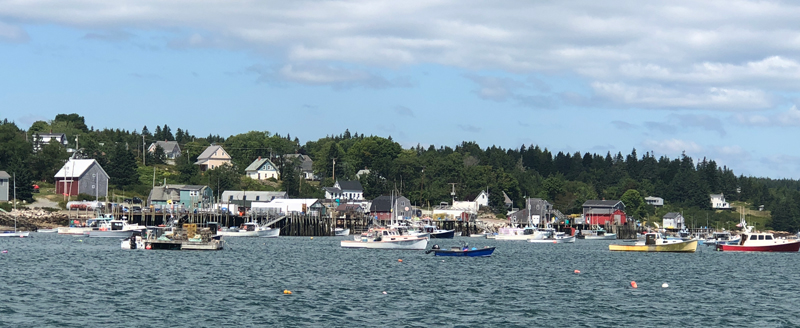
Swan's Island Village in the Harbor
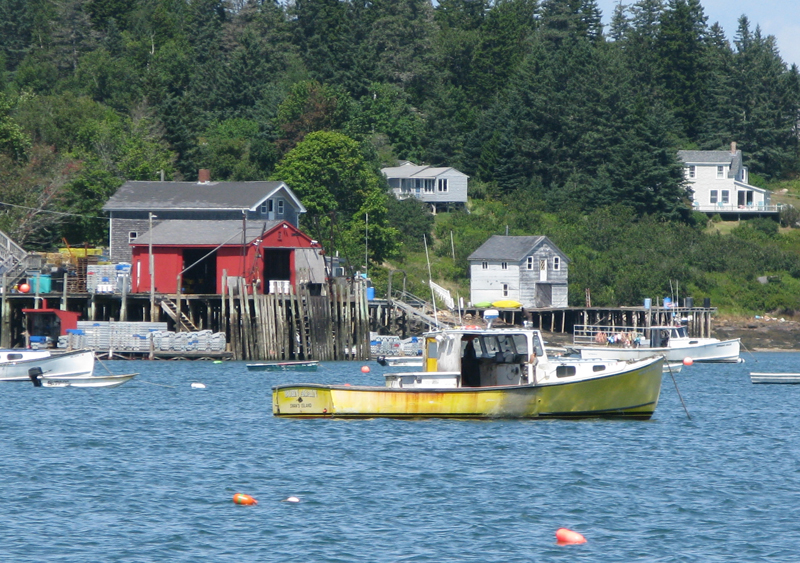
Getting an early start was a good thing today as we arrived at the mooring balls around 11:30 to find almost every ball empty. The one we really liked became vacant as we approached it. The only problem we had was the bow thruster would only run for a few seconds before stopping - another boat job! The mooring balls are placed and maintained by the Fishermen's Cooperative in the Harbor and are relatively inexpensive - $20 a day, with the money being stuffed in a Sprite bottle tied to the ball. The Cooperative is a fishermen-run group that cuts out one level of the lobster distribution chain, giving a better price to the fishermen.
By early afternoon, the mooring balls were full and boats were anchoring including this big one.
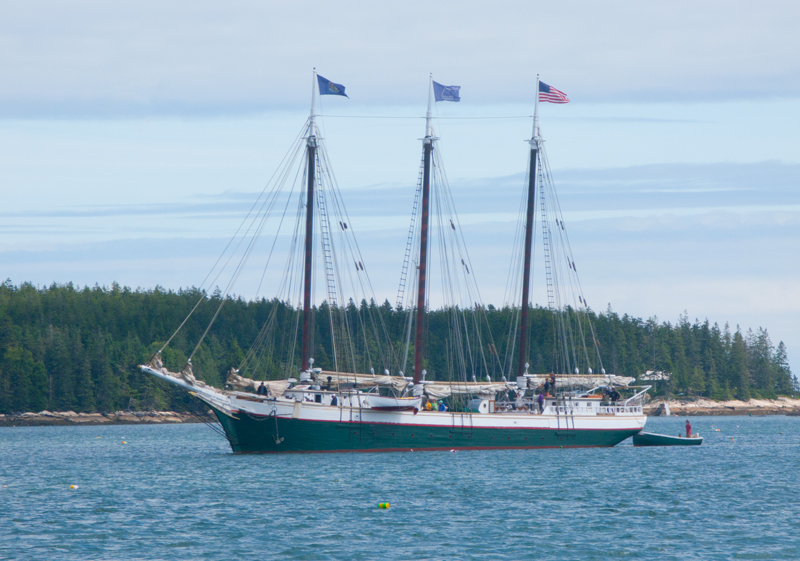
"Victory Chimes"
"Victory Chimes," now a cruise boat sailing out of Rockland, Maine, is the last of the Chesapeake Ram schooners and is a US National Historic Landmark. She is a three-mast gaff rigged schooner built in 1900 in Delaware. She was built for cargo carrying in the Chesapeake bay and only draws 7' 6" with the centerboard up; 18' with it down. The boat has had a varied career: carrying cargo, a passenger vessel; an educational cruise boat in Duluth, MN; restored by Thomas Monaghan (Domino's Pizza); and finally a cruising vessel.
Monday, August 20
A good calm night and we decided to spend another day here enjoying the sun and view. The boats that arrived yesterday, including the schooner, "Victory Chimes", took off for the most part as the morning wore on. We relaxed in the sun and did some boat jobs including some additional checks on our weather station. I spent almost half an hour on the phone with Maretron telling our tale of woe with them only being able to offer one more check which failed. Conclusion: - needs to go in for repair.
Swan's Island was first charted, by who else but Samuel de Champlain who was everywhere in the north, in the early 1600s. At the time it was "discovered", it was a summer hunting ground for local Indians. James Swan, originally from Scotland with a checkered past, bought the island together with 24 others (known as the Burnt Coat group) in 1791 and gave it his name. The first European settler came in 1791 with Swan having little or nothing to do with the property. His wife was unaware that he even owned the group of islands until his death! Fishing and fish processing became the dominant industry with a population that peaked in the 700s in the early 1900s. As fish processing became uneconomical in the 1930s, the population dwindled to today's count of 331 year-round residents largely supported by lobster fishing.
Today, over 45 lobster boats call Swan's home and the vast majority of the working population have some link to lobstering. During the summer months, even the children and teenagers are out with their parents or running their own small lobster boats in the harbor. Below is one of the teenage girls and her younger sister running their own set of traps in "Madame Blueberry".
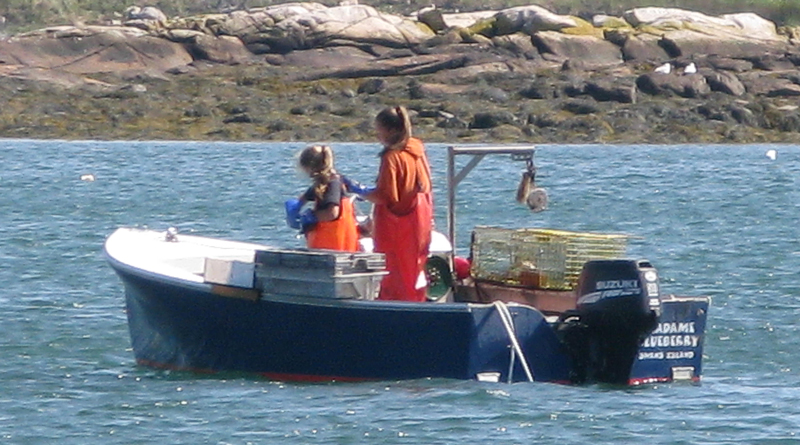
"Madame Blueberry"
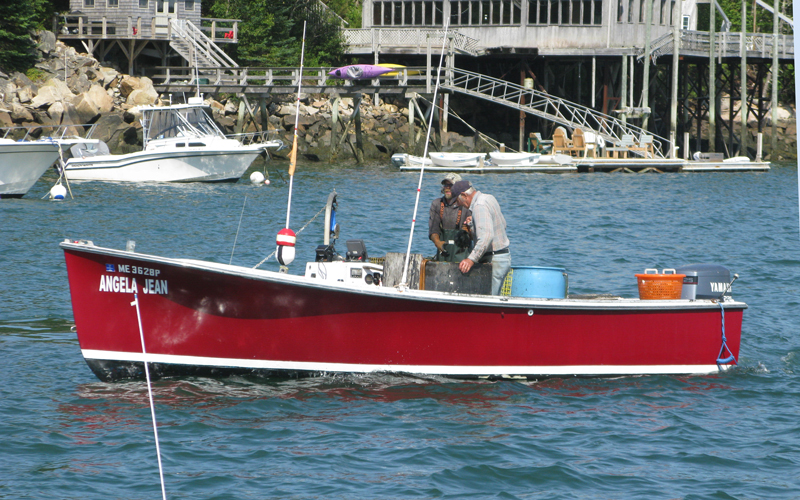
Grandfather and Grandson
While writing this, I checked my news feed and the inventor of the modern wire lobster trap, James Knott, just died at the age of 88. From Massachusetts, he had noticed early in his career that lobstermen spent an inordinate amount of time repairing their wooden lobster traps and saw an opportunity to improve on the old style trap which dated back to the early 1800s with only minor improvements. He created a marine-grade plastic-coated wire mesh fabric and founded a company to manufacture the product. Today, his company is the largest mesh manufacturer in the USA. His trap design is shown below and the "standard" used by most lobstermen in the USA and Canada; although many parts of Canada we passed through in 2016 still use wood traps.

Typical Wire Lobster Trap
The trap is approximately 48" long by 24" wide and 15" high and weigh about 60 lbs. It is weighted to sink to the bottom of the ocean and tethered to a float at the surface; often multiple traps are connected to a single float that is uniquely colored or banded to denote whose traps are connected to it. Traps may be set in water from a few feet to over 250 feet depending upon a number of factors including time of year, water temperature , experience, etc. Lobsters which walk along the ocean floor searching for food are attracted by the fish placed in a nylon mesh bait bag hanging in the first compartment. They enter the trap through a funnel shaped net into the "kitchen". After a good feed, the only easy way out and where you would naturally go after a good meal to relax is the "parlor," via another net funnel where the lobster is trapped.
Small lobsters that would be returned anyway have the ability to exit via the escape vent that is carefully sized to the minimum keepable lobster size. Depending on the area, there will also be another "ghost" panel of some type of biodegradable material in the parlor which acts as an "emergency exit" should the trap be separated from the float by the line being cut by boats, or broken in some way. Trapped lobsters of keepable size are thus able to escape their prison and live for another day.
Traps are typically hauled every few days and the top opened to access the trapped lobsters. Keepers are based on size and sex. In Maine, there is a minimum and maximum shell length (3.25" to 5"); egg bearing females go back. The State has also adopted a mandatory practice of notching the flipper of females to readily identify females which must be returned. After sorting the catch, the trap is re-baited and returned to the depths. Maine appears to have some of the best conservation and lobster management in the USA.
We have seen traps pulled up with anywhere up to 15 lobsters inside, netting three keepers. Considering a commercial licence holder may have somewhere around 800 traps set out, a successful fisherman can make a reasonable living, even after paying crew and boat expenses such as fuel and maintenance; fuel costs must be high as lobster boats have two speeds .... idling or wide open!!
Tuesday, August 21
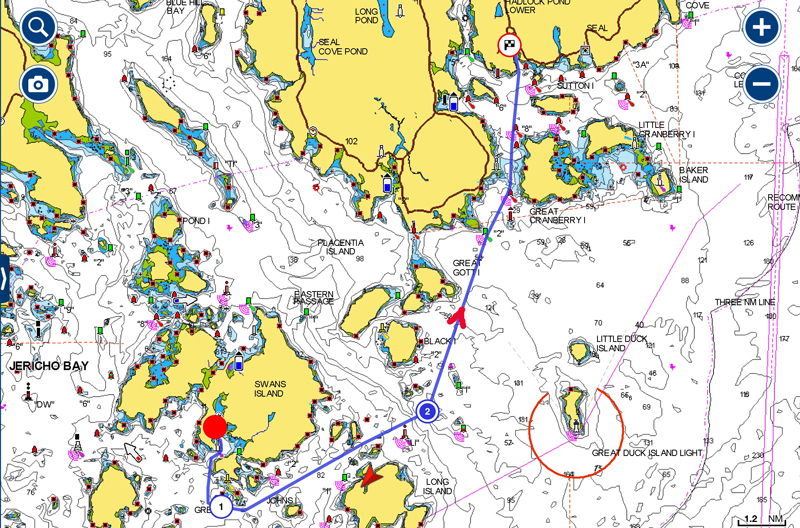
Swan's Island to Northeast Harbor - 17nm
Nice weather again as we took off for Northeast Harbor to meet up with Dean and Charlotte, who was returning from Chicago. Timing was good again and we managed to get on a floating dock versus a mooring ball.
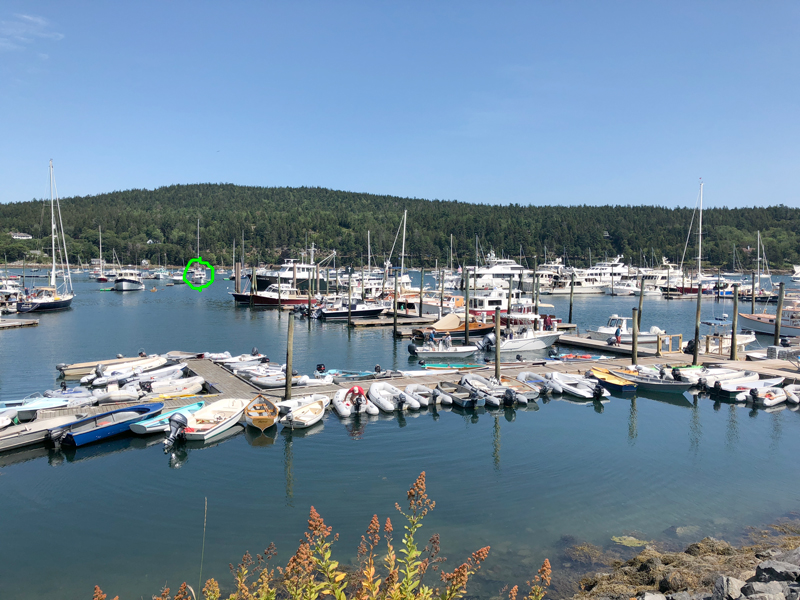
After checking in, we dinghied over to the northeast part of the harbor and walked up to the Theya House and Gardens which were better than we had seen last year. The dahlias were in full bloom and spectacular.
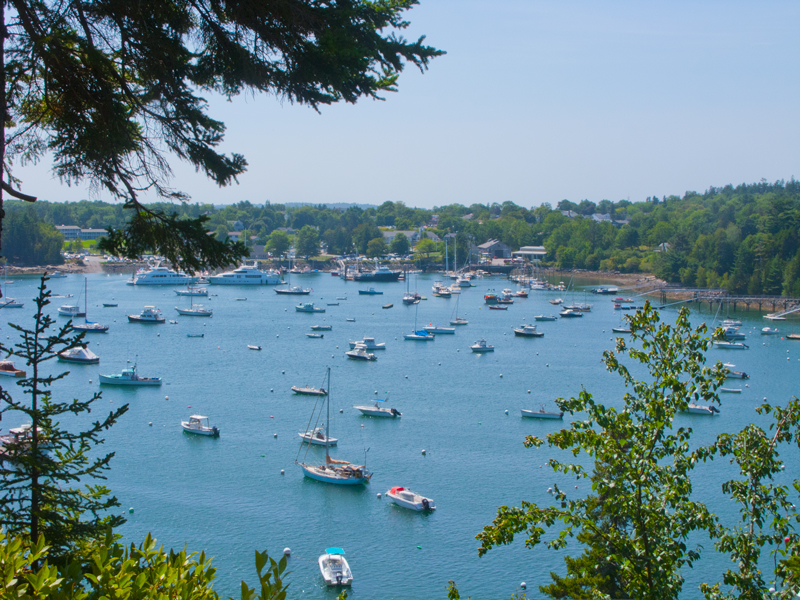
NE Harbor From Asticou Terrace


The Gardens lead to the Jordan Pond Trail, a three mile hike we did last year, with the ultimate destination of the Jordan Pond House and food. This is a relatively easy trail through the woods with only small ups and downs but a few scenic areas.

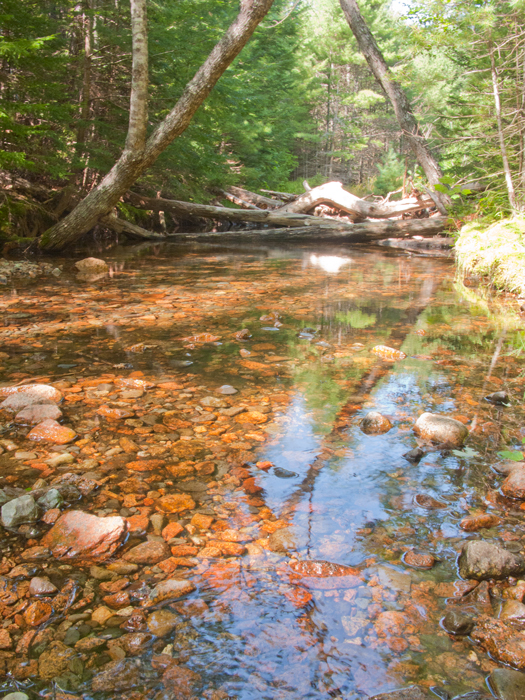
We were ready for our cuppa tea and popovers with butter and jam overlooking scenic Jordan Pond.
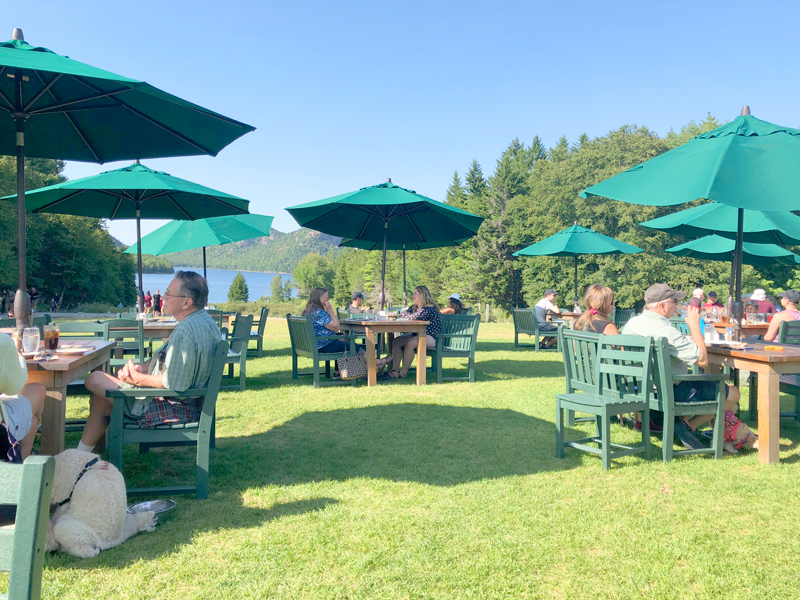

Fortified by food, we took the hard way back - the bus! And the fog rolled in.....
Wednesday, August 22
As predicted in the forecast, we woke to a nasty day with heavy fog, almost like light rain, and the prospect of it continuing all day. Judy dinghied over to the Marina building to do some stuff on her computer and go to the Library while I had some boat jobs to do. The defunct weather station was removed and boxed up ready to send back; the GPS was relocated to the weather station area on the mast for better reception; and the bow thruster problem was solved - a productive day considering the weather.
The bow thruster problem turned out to be a low battery. When we hit the rock, the small circuit breaker in the cable that charges the battery must have tripped so that, from then on, the battery was being discharged every time we used the bow thruster or windlass. Eventually there wasn't enough power to run the thruster for more than three seconds. While the boat was being repaired, I had the charger on to no avail as it turned out. Flipping the breaker on, the charger soon recovered the battery to a reasonable voltage; a run on the water should get it back to a full charge.
This morning, the red American Tug we had seen in a Harbor slip moved out to a nearby float but did not think too much about it other than they were saving a lot of money by doing so and getting a better view.
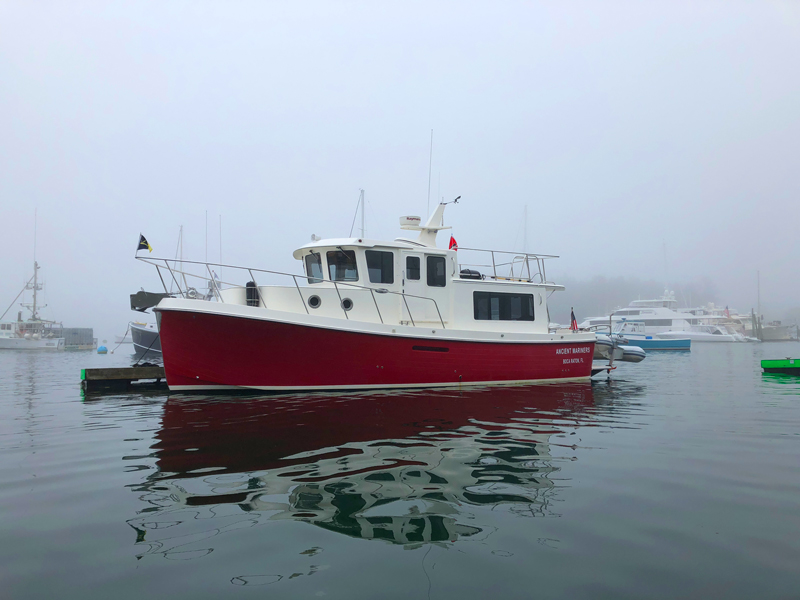
"Ancient Mariners"
Not long after, I heard a knock on the boat hull and a couple in a dinghy introduced themselves. They were friends of Lee and Barb (NT owners we met and traveled with in 2016) and had bought their sailboat. We chatted for a while and they told me more about the American Tug owners. The "captain" will be 100 in October and the "admiral" was 96. They live in Florida and keep the recently acquired boat in Portland. Prior to that, they had a sailboat they used to cruise up from Florida every summer but it was getting too much like hard work when he reached 96! We saw them leave the next day and they were moving around the boat pretty well. We hope that it was boating that kept them young!
In the evening, we went to a talk at the Library by Michael Komanecky, the Chief Curator of the Farnsworth Art Museum in Rockland. The subject was N.C.Wyeth and Poems of American Patriotism.
We went to bed early with the fog still enveloping the Harbor.
Thursday, August 23
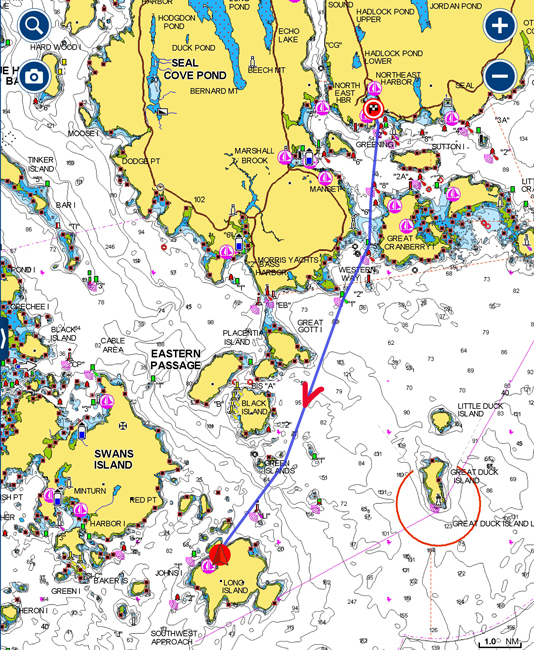
Northeast Harbor to Frenchboro - 12nm
A total reversal in the weather today with blue skies and abundant sun!! We were eager to get going but took the opportunity to do some early morning laundry, shower, and have breakfast with Dean and Charlotte as we may not see them again this summer. We made the 11:00 departure time with a few minutes to spare and had a good run south to Lunt Harbor, Frenchboro on Long Island. It can be confusing how some places are known in Maine - few people we talk to recognize the name Long Island but immediately know Frenchboro or Lunt Harbor which is the harbor at Frenchboro. The marina here maintains five mooring balls in the outer harbor for transient vessels which can be exposed in the wrong weather but today was perfect.
A View Around Our Mooring
We packed a picnic lunch and dinghied to shore to take a hike around the Island shoreline to Northeast Head and back to Frenchboro. Long Island supports one of the smallest populations of any Maine island with only 64 year-round residents. Virtually everyone fishes. Almost 2/3 of the Island is now owned by the Maine Coast Heritage Trust in partnership with the Island Institute, Maine Seacoast Mission and local residents. The property had been listed for sale for some time and was vulnerable to subdivision and seasonal home development. Its acquisition assured long-term access to the coastline and interior forest.
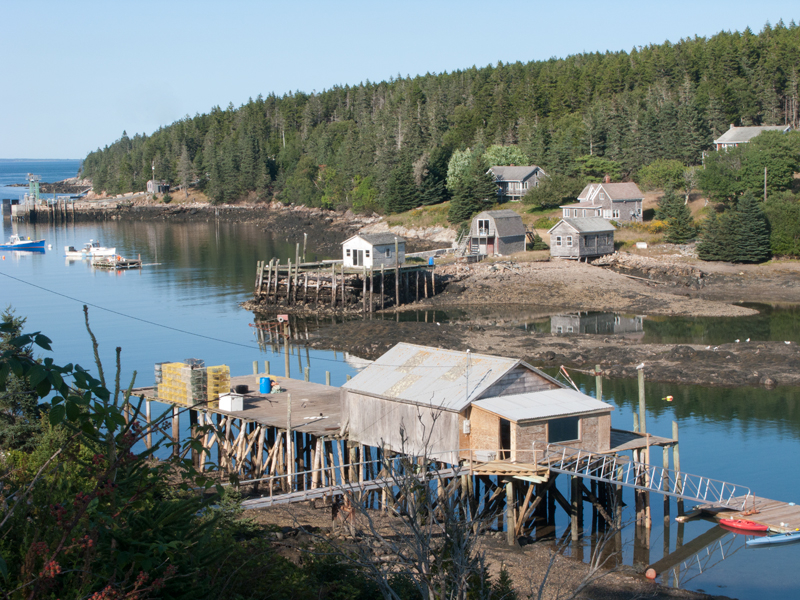
Lunt Harbor at Low Tide
Some views from our hike:
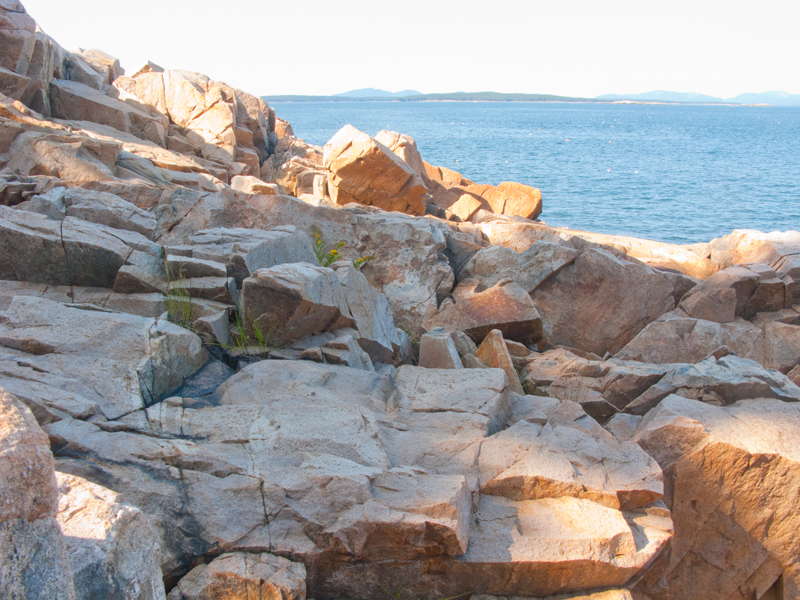
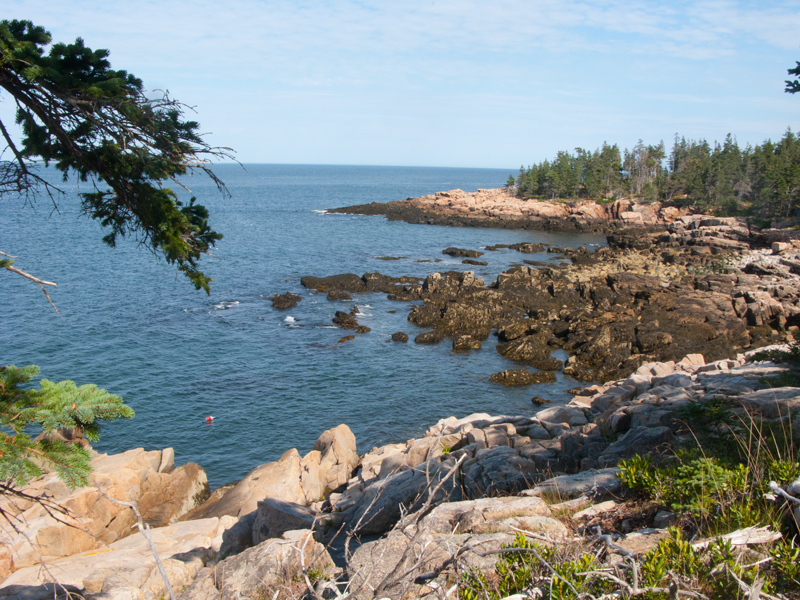
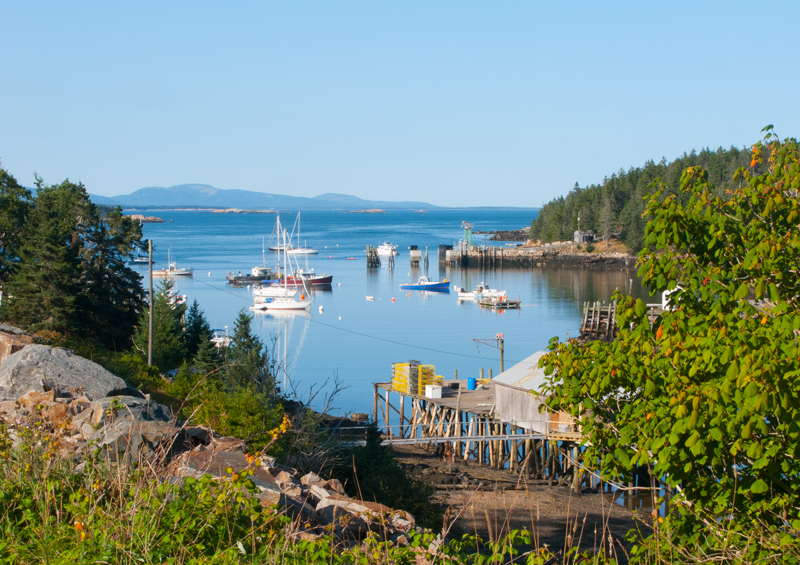
As you can see, there is some spectacular scenery here and we were also blessed with dead calm water on our mooring with views of distant Mt. Desert Island on the horizon. The sun was setting by the time we ate and nightfall comes early now at around 7:30 pm.
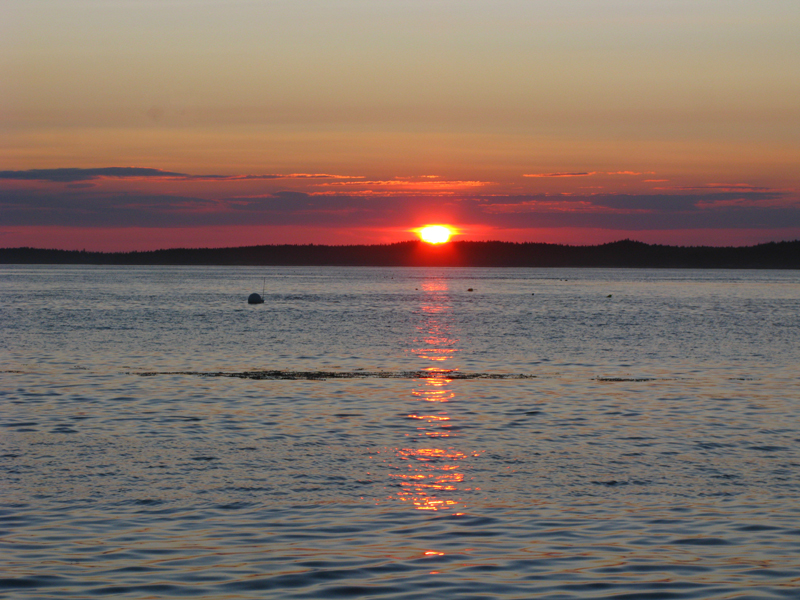 it's
it's
It's full moon time here again as it climbs over the trees to the East.
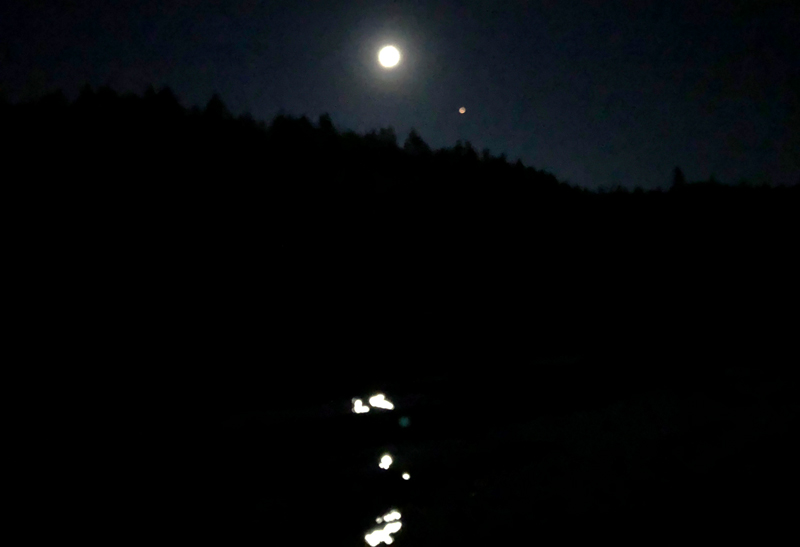
Full Moon and a Planet (?) As Well
Friday, August 24

Frenchboro to Herrick Bay - 13nm
A perfect night, dead calm and a little cooler with mid 50s this morning. We decided to get an early start to make the short run back to Herrick Bay and it was almost a straight shot once we rounded the northeast end of Swan's Island except for a short detour around the schooner "Ladona."

Timing was perfect and we arrived close to high tide so we could go into the dock for a couple of hours and give the boat a good freshwater wash. Even though our travels over the past week were in relatively calm waters, the exterior of the boat, especially the stainless steel, had a good covering of sea salt. The compass and autopilot continued to work as hoped. Relaxed for the rest of the day while the boat clothes were washed and dried.
Tonight was almost a full moon and very orange as it climbed into the night sky:
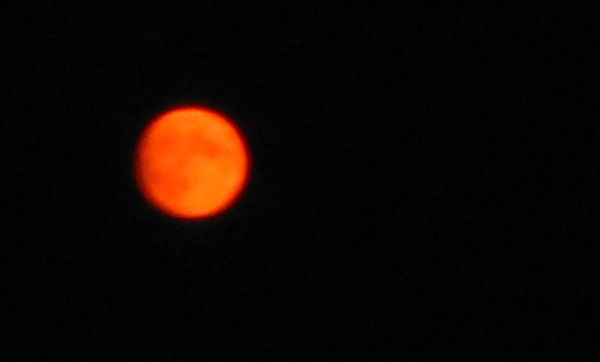
Red Moon Rising - A Little Fuzzy From the Boat
Saturday, August 25
Up early to head into Bangor (by car) about 55 miles for the 2018 American Folk Festival held on the waterfront. We had tried to get dockage there and go by boat up the Penobscot River but had no luck as they were full. As it happened, the dock only had one boat all day - go figure! After a quick breakfast downtown, we claimed our spot at the Two Rivers Stage and set our seats up for the day. The Festival has been an annual event for many years and has gradually expanded its scope beyond what most people would consider "folk" but there were enough acts on the schedule for Saturday that we were interested in. Fortunately, they were all at the one stage so we didn't have to jump around.
We had seen a couple of the groups at Belfast and Bar Harbor but they were some of the better groups and played new sets. It was a great day of Irish, Scottish, French, and Cape Breton music. Even had a little bluegrass thrown in. Photos alone do not tell of the caliber of the musicians we saw.....
The Fiddler Player, Gus Becasse is 17!
June 10 - 16 |
June 17 - 23 |
June 24 - 30 |
July 1 - 7 |
July 8 - 14 |
July 15 - 21 |
July 22 - 28 |
Jul 29 - Aug 4 |
Aug 5 - 11 |
Aug 12 - 18 |
Aug 19 - 25 |
Aug 26 - Sep 1 |
Sep 2 - 8 |
Sep 9 - 15 |
Sep 16 - 22 |

